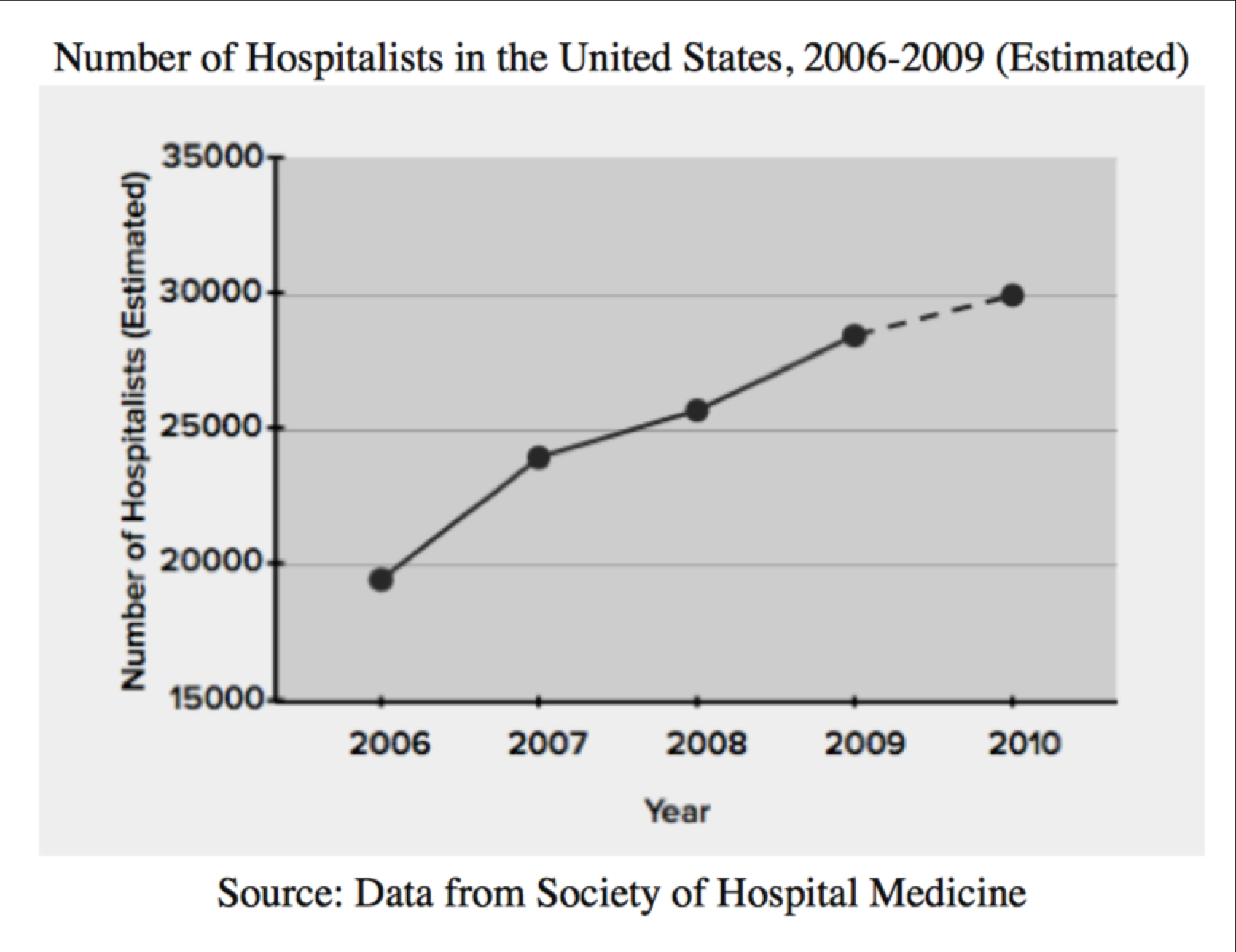Questions 1-11 are based on the following
passage.
The Rise of the Hospitalist
According to a recent article in The New England Journal of Medicine, primary care medicine in the United States is “at grave risk” of collapsing. Since primary care providers typically serve as a patient’s first point of contact in the health care system, their importance cannot be overstated. However, in 2007, a Q1 trivial 5.1percent of graduating medical students had decided to pursue further training in this field. Q2 One of the most promising solutions to our country’s primary care predicament is the evolution of the “hospitalist.” First coined in 1996, the term “hospitalist” refers to physicians who dedicate most of Q3 there career to the care of acutely ill hospitalized patients. They provide care for patients who require hospital treatment with medicine (rather than surgery). The vast majority of hospitalists are trained in internal medicine or family medicine, though a small percentage also comes from other specialties including pediatrics, psychiatry, and dermatology. Q4 Because hospitalists generally work twelve-hour shifts for seven days in a row, they provide patients with continuity of care, allowing them to be seen by the same physician for much of their hospital stay. Since they are based in the Q5 hospital hospitalists can also check-up on each patient multiple times a day, and they can coordinate care from specialists and ancillary departments such as Q6 the physical and occupational therapy department, and the social services department, and the nursing care management department. From the hospital’s perspective, hospitalists are also generally associated with modest cost savings since hospitalists coordinate among multiple departments and, as a result, Q7 being well-positioned to effectively allocate hospital resources. The rapid growth of hospitalist medicine in recent years suggests that hospitalists are here to stay. Q8 While many healthcare providers and recipients laud this growth, there are still a number of outstanding issues that need to be addressed. For example, experts still do not know what long-term impacts the hospitalist movement will have on the general internist and family medicine Q9 workforce? If more internists and family medicine doctors decide to become hospitalists, what will happen to the availability of these doctors for the outpatient population? Q10 In addition, if hospitalists are to become full members of academic medical centers, they will likely need to incorporate a number of additional skills into their training, particularly research skills. While the precise trajectory of the hospitalist movement is still unclear, this new field of medicine has immense potential to fill many of the current gaps in our healthcare system. Q11
